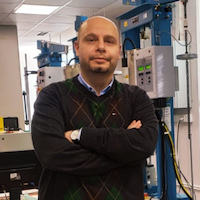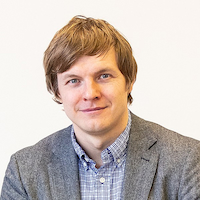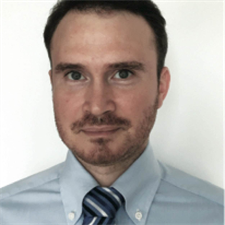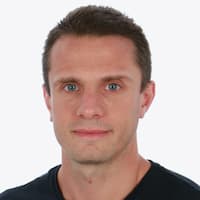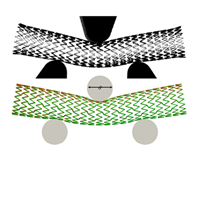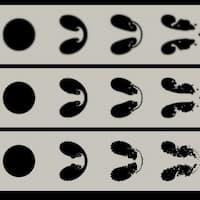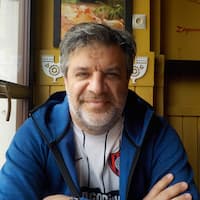events
[Video available!] Severo Ochoa Seminar - "Two-scale H(div)-conforming approximations for hybrid-mixed finite element models", by Sonia Maria Gomes
Thursday, November 18th, 2021. Time: 12 noon
Blended Learning - O.C. Zienkiewicz Conference Room, Gran Capità S/N, C1 Building, UPC Campus Nord, Barcelona - Link for online session: https://meet.google.com/qjo-sttx-dgo
ABSTRACT
The importance of H(div)-conforming approximations is well recognized for conservative mixed finite element formulations of multiphysics systems. For instance, they can be applied for the discretization of flux or stress variables in mixed formulations for Darcy’s flows or elasticity problems, respectively. There exists in the literature a variety of such approximation spaces, which are usually restricted to standard types of element geometry. We describe a construction that can be applied to more general polytopal partitions (allowing non-matching or non-convex elements) and used in multiscale approaches. The discretizations inside the polytopes may be enriched in different extent as compared with the accuracy of traces over facets (e.g., normal flux or traction), only a mild compatibility constraint being required. In hybrid-mixed finite element models, the trace and a coarse potential component (piecewise constant pressure or rigid modes) are taken as primal variables, which are computed by a stable global system. Local independent problems are set to resolve secondary variables representing small details within each polytope by usual stable mixed finite element methods, the trace variable playing the role of Neumann boundary data. There are global-local operators transferring information between the two levels of resolution: coarse and fine. We show stability and convergence rates for a variety of such two-scale space configurations. Numerical verifications assess the theoretical error estimates and highlight the high precision of the new methods on coarse meshes for heterogeneous material problems. These results come from a scientific cooperation with different research groups in Brazil and integrate some recent publications, as in [1, 2, 3].
References
[1] O. Durán, P. R. B. Devloo, S. M. Gomes, F. Valentin. A multiscale hybrid method for Darcy’s problems
using mixed finite element local solvers. Computer Methods in Applied Mechanics and Engineering, 354, 2019: 213–244.
[2] O. Durán, P. R. B. Devloo, S. M. Gomes, J. Villegas, A multiscale mixed finite element method applied
to the simulation of two-phase flows. Computer Methods in Applied Mechanics and Engineering, 383, 2021, 113780.
[3] P. R. B. Devloo, A. M. Farias, S. M. Gomes, W. Pereira, A. J. B. dos Santos, F. Valentin, New H(div)-conforming multiscale hybrid-mixed methods for the elasticity problem on polygonal meshes. ESAIM Mathematical Modeling and Numerical Analysis 55, 2021, 1005-1037.
SPEAKER CV
Sônia M. Gomes received her Master and PhD degrees in Mathematics (1977 and 1982) at the Institute of Pure and Applied Mathematics, in Rio de Janeiro, RJ, Brazil, and spent post-doctoral stages at the Institute for Advanced Study, Princeton, USA, and at the Uppsala University, Sweden (1997-1998). Since 1992, she works at the Institute of Mathematics, Statistics and Scientific Computing of the State University of Campinas (Unicamp), SP, Brazil. After her retirement as Full Professor in 2013, she acts as Collaborating Researcher. Prof. Gomes also holds the status of Research Fellow of the Brazilian National Research Council (since 1989) and of Associate Researcher at the Centre for Petroleum Studies at Unicamp (since 2004). Before moving to Campinas, she held research and teaching positions at the University of Buenos Aires, Argentina (1981-1985), and at the Brazilian Institute for Space Research, in São José dos Campos, SP, Brazil (1986-1991).
The research and teaching experience of Prof. Gomes during these four decades mostly focused on Applied Mathematics. Her works on Numerical Analysis for partial differential equations emphasised adaptive and multiscale schemes in the contexts of wavelet analysis or finite elements. These academic activities resulted in the formation of 15 graduate students at Unicamp, the publication of 56 papers in indexed peer-reviewed journals, and scientific cooperations with different international research groups. She also obtained seasoned experience in developing research in cooperation with Brazilian industrial partners for aeronautic and petroleum numerical simulations.

